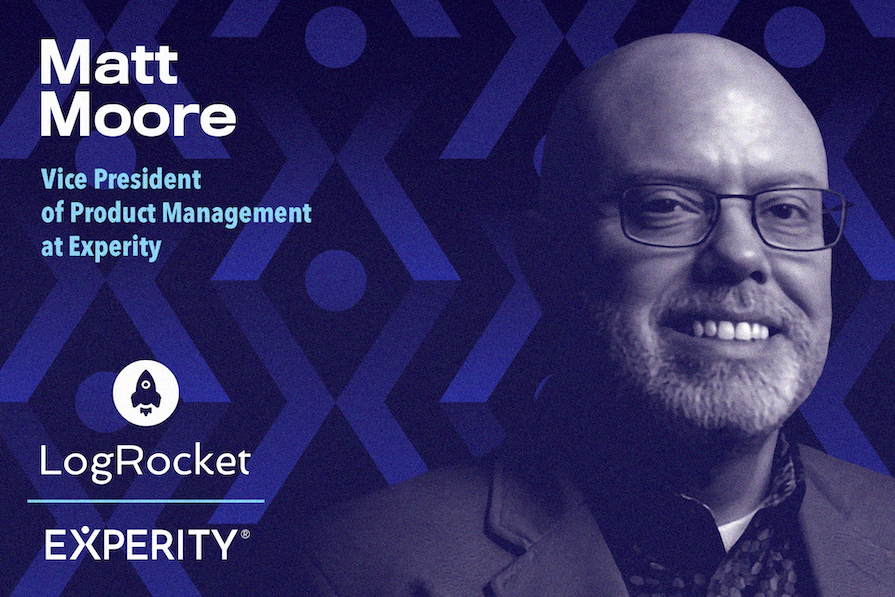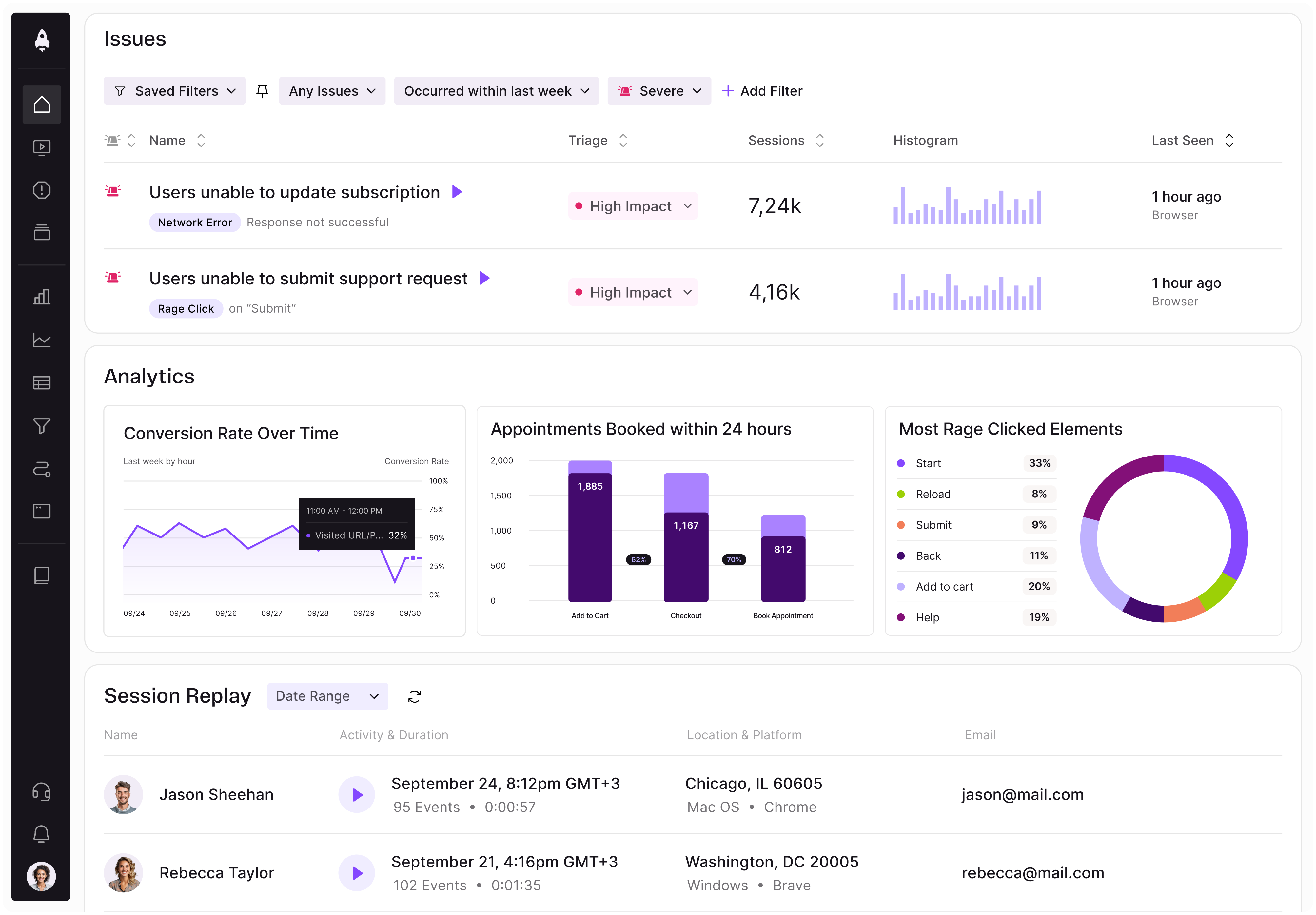Matt Moore is Vice President of Product Management at Experity, a software and services company for on-demand healthcare in the U.S. urgent care market. He got his start in product management in financial services in the mid-1990s and his health tech product management career kicked off when he joined McKesson as Director of Product Management. Before his current role at Experity, Matt served in various health tech leadership positions at Change Healthcare, Fiserv, and Home Care Pulse.

In our conversation, Matt talks about how new technology, such as AI, is changing healthcare for the better and improving patient outcomes. He shares what makes a good product manager in regulated spaces such as healthcare and fintech, as well as the importance of using the product yourself to understand how it affects all users in the product’s ecosystem.
The short definition is that product management is about delivering monetized value to the market. As it pertains to regulations and speed of adoption, product management in healthcare, as well as financial services, is about balancing innovation with regulation, complexity, and risk. Unlike consumer tech where speed is a priority, success in these industries differs. It requires a lot of navigating compliance while managing diverse stakeholders. Especially in healthcare — more so than in financial services — it’s about driving adoption in a risk-averse environment.
Product managers have to push for forward-thinking solutions while they try to stay aligned with HIPAA laws or financial compliance frameworks. We think of compliance not as a blocker but more like a design constraint. The iteration component is slower, though — nearly every update has to go through legal, compliance, and operational review, and requires a lot of careful planning and strategic timing.
Specifically in healthcare, success requires understanding clinical workflows, the payer/provider dynamics, regulatory reporting, and risk management. It’s not just about product frameworks.
The first thing I’ll say is that it takes years to become a great product manager. You just don’t emerge from grad school with your MBA, and you’re magically a good PM. Only recently has higher education offered a curriculum for product management. Before, the MBA path was the only option, but even with that education, real-world learning is crucial.
In healthcare and financial services, an outstanding product manager isn’t just someone who can execute a roadmap — they have to think strategically. They have to navigate a ton of complexity. At the same time, they have to influence a wide range of stakeholders and keep them all aligned. While the technical domain knowledge matters, the best product managers in these industries excel at critical thinking, stakeholder management, and problem-solving under a lot of different constraints.
Product managers often influence without authority. And PMs in these industries rarely have direct control over every function. They have to align cross-functional teams to get buy-in from legal compliance, communicate effectively with all the executives, and do this all with a formal mandate.
A good product manager needs to have customer and market empathy. Understanding how users actually work is crucial. And in healthcare, that means knowing how a clinician interacts with an EMR under stress. In financial services, that means grasping the risk aversion and the compliance burdens that shape a lot of that decision-making. So, the best product managers understand these pain points.
Also, in these industries especially, a good PM needs to have great adaptability and problem-solving skills. There are regulatory shifts, security concerns, and evolving payer models all the time — PMs in these industries deal with constant change. They don’t just react; they anticipate these obstacles, propose solutions, and pivot intelligently.
I’m lucky to have had product management experience in both of these industries. The complexity of both has trained me well over the years.
One thing we look at when we’re hiring is domain, as well as general product manager skillset. We find that certain companies will put an emphasis on one or the other, and in my experience, emphasis is too often put on domain knowledge. In healthcare specifically, there are tons of different domains, such as financial and clinical aspects. I’ve seen a lot of job postings for product managers in different parts of healthcare, and in the few times in my career when I’ve ventured out for new opportunities, a lot of these conversations were anchored in the domain, not what the product manager’s outcomes have been.
When I’m hiring, that gets flipped. If I can find that domain expert who’s also a great product manager, that’s amazing, but they’re usually unicorns. Depending on the level I’m hiring for, I focus on experience. What are the outcomes? Do they understand how to monetize innovation? Do they understand value delivery over feature delivery? Do they have that empathy? Are they talking to the market? Or are they making pricing decisions in a vacuum? It comes down to fundamentals. Are they practicing the fundamentals and staying focused on actually delivering value?
A lot of PMs love to talk about agile. It’s a great software development methodology, but too often, people associate agile with product management. We’ve got to pull those apart. It’s great if someone has agile experience, but if they’re going to spend their entire day working with developers, that’s not what I’m looking for. I look for fundamentals and associated outcomes, especially around delivering value.
Product managers in healthcare operate at the intersection of business strategy, regulatory compliance, and technology. Our success depends not just on execution but also on the ability to influence and align these stakeholders. At Experity, we actively support our product managers in strengthening these skills by providing them with the right tools, frameworks, and organizational support.
As an organization, we’re aligned on what product management is. We create that direct exposure to the customers and stakeholders. PMs can’t build the right products in a vacuum, so we give them regular access to urgent care clinic leaders, frontline staff, and end users, in our case. That way, they get firsthand insight into those real-world workflows and pain points.
In fact, on my team, we have a product manager who works in an urgent care clinic on the weekends. That experience has provided us with tons of firsthand data that directly influences some of our strategies and roadmaps.
Further, we promote strong cross-functional collaboration. The key component to delivering value to customers is stakeholder alignment. Navigating that complexity requires alignment across many teams, so we create structures where the product managers work closely with compliance, sales, rev ops, engineering, customer success, the market, and customers. We ensure that they develop the ability to manage all the different competing priorities and find solutions that work across the board.
When I started leading the product team at Experity, it was very important for me to get out into the market and see our products in use. I spent four days at one of our clients — an urgent care clinic — in South Carolina. I spent the first day at the front desk watching all the patients come in and seeing how the front desk person dealt with the patient intake process. I was trying to connect all the dots. On day two, I told them, “OK, I want to sit in your seat and do patient intake. I want to use the software.” Thankfully, the second day was not nearly as busy as the first day, or that would’ve really impacted some patient flow!
Not just observing but actually using the solution, especially as new to the product as I was, was key. We do that same thing across the different functions in the company. We have very friendly clients who allow us to come into their clinics, observe, and participate like I was able to do. I brought that experience back to my team and explained what I saw. Lots of questions start flowing from that.
The team asked, “Well, why is the client using it in that manner? Why are they going through the workflow the way that you described?” This was important because now, the team was thinking about whether or not we designed the workflows optimally. Did we actually get enough market input on how this should flow? Is the client getting the value out of this that we thought we built into it? Is it a training issue, or are they not optimizing the utilization of the product?
All these questions were critical for us to answer. Even when we have a product in the market for years, that doesn’t mean we can just stop. Technology changes and workflows inside of healthcare change as well. The number of patients coming into an urgent care clinic in a day can vary by day. As I said, the first day I was there, they were incredibly busy. On the second day, there was a much lower volume of patients. It was crucial to see this so we could understand some fundamental differences between our mega clients and smaller ones and how they use our product.
Historically, healthcare has been slow to adopt new technology, mostly due to regulatory constraints. There’s a lot of risk aversion and complexity in integrating with existing legacy systems. I was in it when that was the norm, and it was challenging.
Over the past few years, we’ve seen a clear acceleration in tech in healthcare, and it’s driven by a combination of market forces, regulatory shifts, and, most importantly, the changing patient or consumer expectations. Regulatory bodies have encouraged modernization, whether through interoperability or things like value-based care reimbursement models. All these shifts have created urgency for healthcare organizations to adopt digital solutions faster.
Now, we’ve reached an intersection where a consumer and a patient are the same. We called this the consumerization of healthcare in the past, but it’s only become a reality in the last few years. Patients and consumers now expect seamless digital experiences just like they’re getting in retail. They demand online scheduling, virtual care, AI-driven assistance, etc. This has pushed healthcare organizations to rethink everything that is patient engagement.
However, unlike consumer apps, healthcare tech must work flawlessly, especially in pressure settings like urgent care and emergency rooms. Poor usability isn’t just frustrating; it actually impacts patient care. That’s another really important dynamic. When we update our apps on our phones as consumers, and there are some bugs introduced, it’s frustrating for us, but it’s not the end of the world. In healthcare, it is very different.
The advancement of tech and AI is delivering some great tools out there. Regulations like HIPAA and HITRUST haven’t changed overnight, though, so product managers have to ensure that speed does not come at the expense of security and privacy. With all the data that healthcare has, it still relies on very deeply entrenched legacy systems. Product managers must design solutions that work within these constraints while paving that path for modernization.
A lot of healthcare organizations still resist change due to operational disruption concerns. It comes back to the product manager to be adept at demonstrating that clear ROI and create those adoption strategies to get that buy-in from providers and administrators. Some of these people are clinicians — they’re not MBAs. They’re not used to running a business. They need to understand why this can be a good thing. Even though it feels like an operational disruption, there’s a large payoff afterward.
As far as how AI impacts digital product offerings in healthcare, I’d say a two-word answer: exceptionally valuable. AI is rapidly reshaping healthcare, not just in clinical applications but across the entire digital health ecosystem. From patient engagement to overall operational efficiency, these AI-driven solutions are becoming table stakes.
At Experity, we are all in on AI across our entire product portfolio and service lines. AI is reducing manual work for scheduling, documentation, and prior authorizations. That allows providers to spend more time on what matters, which is patient care. Then, we look at patient engagement tools in the market. It’s enhanced with things like conversational AI and predictive analytics. There are AI-powered triage tools. That makes care more accessible, more personal, and a lot more efficient.
Lastly, we see interoperability and this world of unstructured data processing. Now, we’ve got these LLMs that can process unstructured clinical notes. They streamline data sharing and enhance interoperability, which has, for a very long time, been a challenge across all parts of healthcare. AI is addressing long-standing pain points in healthcare IT and accelerating the resolution of those pain points across the whole health tech world.
Healthcare product management is evolving quite rapidly. AI, digital transformation, and shifting regs are all accelerating change. At Experity, we’re empowering the product team to stay agile by fostering a culture of adaptability, data-driven decision-making, and customer-centric innovation while making sure that we keep patient care and compliance at the core.
Our team uses AI tools in their daily work. We focus on the outcomes, not just the features. We’re emphasizing solving real problems over shipping features. We’re not trying to be a feature factory but trying to deliver value to the marketplace. We train our PMs to challenge assumptions, validate ideas with data, and focus on that measurable impact, whether it’s improving efficiency for providers or enhancing patient engagement.
We make sure that the product managers stay close to urgent care operators, the providers, and the frontline staff so they’re always working on what matters most rather than what we say looks good on a road track.
Regular usability testing, A/B experiments, and direct customer conversations help us iterate based on their real-world insights. Even in a regulated space, speed matters. We try to instill a mindset of safe experimentation. Our PMs are encouraged to test and learn while ensuring privacy, compliance, and patient safety, since all of those things will always be non-negotiable for us.

LogRocket identifies friction points in the user experience so you can make informed decisions about product and design changes that must happen to hit your goals.
With LogRocket, you can understand the scope of the issues affecting your product and prioritize the changes that need to be made. LogRocket simplifies workflows by allowing Engineering, Product, UX, and Design teams to work from the same data as you, eliminating any confusion about what needs to be done.
Get your teams on the same page — try LogRocket today.

A practical framework for PMs to use AI in ideation without sacrificing judgment, strategy, or decision quality.

A practical five minute revenue estimation method to help product managers compare ideas, drop low impact features, and prioritize smarter.

A practical guide for PMs who want to stop being bottlenecks, delegate smarter, and lead teams effectively with a clear ownership framework.

Stop letting unreliable data block features. Treat data as inventory to track quality, ownership, and ship with confidence.